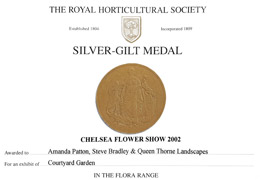I recently visited what is probably one of the most beautiful and exciting nurseries in the UK; Architectural Plants. It does what it says on the tin, growing and supplying plants that are architectural in their form, and I’d like to take a moment to expand on what that means.

The garden designer Christopher Tunnard was an early protagonist for Modernist gardens, creating the iconic garden of Bentley Wood in 1928. Modernism took a very long time to translate from architecture to gardens and there was initially a lot of opposition from the public – bearing in mind that the first Modernist houses were being created at the time that Gertrude Jekyll was making a variation of cottage gardens. There is a wonderful photograph, taken in the 1930′s, of a Modernist house to which an Arts and Crafts garden had been ’tacked on’; Tunnard, at that time in a minority in believing that a house and garden should be in harmony, probably despaired that the public reaction to this house was that the “garden was delightful but the house was an abomination.”! I’ve put a link to a photo of this house at the end of this entry.
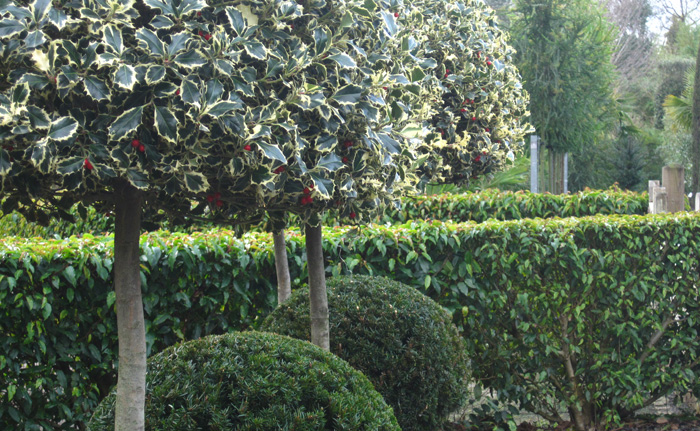
Tunnard’s vision for gardens can be epitomised by the quotation that “‘To find beauty in form instead of making it depend on ornament is the goal to which humanity is aspiring” and this is where architectural plants come in. A lot of people ask me if I design the hard landscaping elements or just the planting, with the misconception that garden design is purely about the plants, when in fact garden design is about the organisation of three-dimensional space – creating the form – and the tools at one’s disposal to do this include both hard and soft landscaping elements, as well as water, levels changes and surfaces such as lawn. Where garden design is just about, for instance, putting an arbour in the corner, that is ornamentation, not form; and equally where plants are used as decoration, not form, the organisation of the space – the design – often suffers as a result.
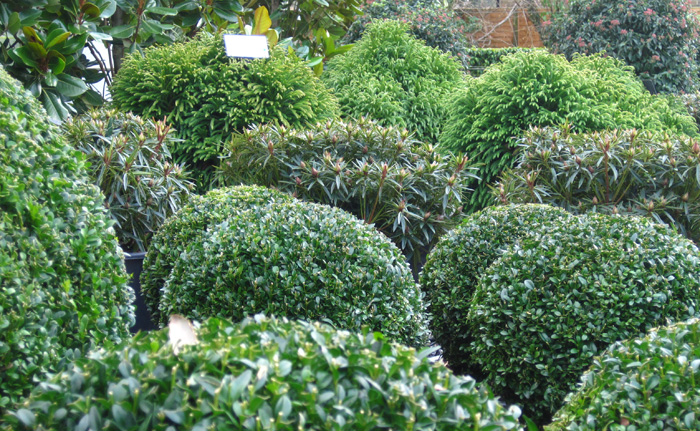
Plants with distinctive shapes, whether they are born with great shape or have had it thrust upon them, are an incredibly useful tool in developing the form – the architecture – of the garden. Mounded shapes such as these clipped box, rhododendrons and clipped Cryptomeria (above) draw the eye to the ground, and when this form is used en masse, especially as here with interesting textural contrasts, it sets up rhythms that can be used to lead the eye around the garden.
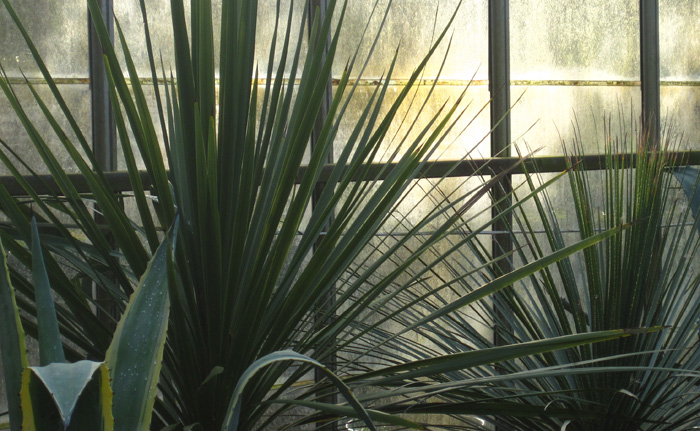
By contrast, plants with vertical leaves are exciting and dynamic and create great drama in a garden setting. They will also draw the eye upward, and this feature can be used to create links to other areas of the garden, or to trees or other features beyond your boundaries.
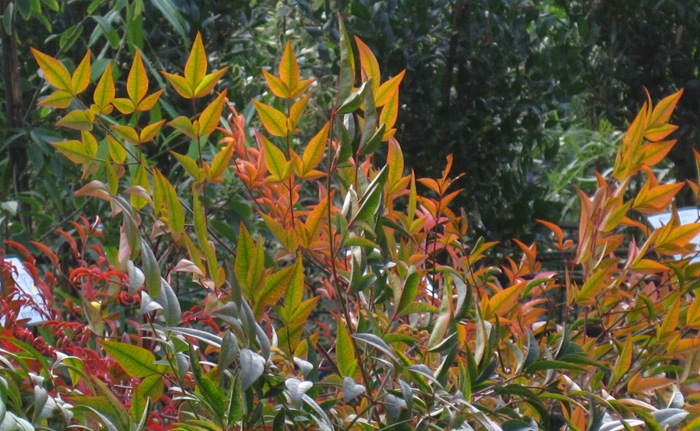
More airy plants with an open structure and can be used to capture light, but this doesn’t mean that they are insubstantial. Nandina domestica, seen above, is an evergreen plant whose young leaves are flushed with crimson tints which look amazing when lit from behind – again, this can be used to create drama in the garden but perhaps more importantly it can be used to prevent evergreen plantings from becoming too visually heavy.
I would highly recommend a visit to Architectural Plants for inspiration on how to create plantings using plants with strong forms, for a stunning setting where you can wander in a beautiful Sussex valley, and where they’ll always make you a good cup of tea. I’ll leave you with some photos of stripped trunks of the Chusan palm Trachycarpus fortunei; I was fascinated by the abstract patterns and vibrant colours left behind after the shaggy fibres from old leaves have been removed.


If you’d like to see the house that Christopher Tunnard was describing cut and paste the link below; you’ll need to scroll down to about half way to see a photo of it (though you’ll probably get distracted on the way down, it’s a fascinating era in architecture and garden/landscape design). English garden design
Architectural Plants is based in Nuthurst, just south of Horsham, and is open every day except Sunday.




